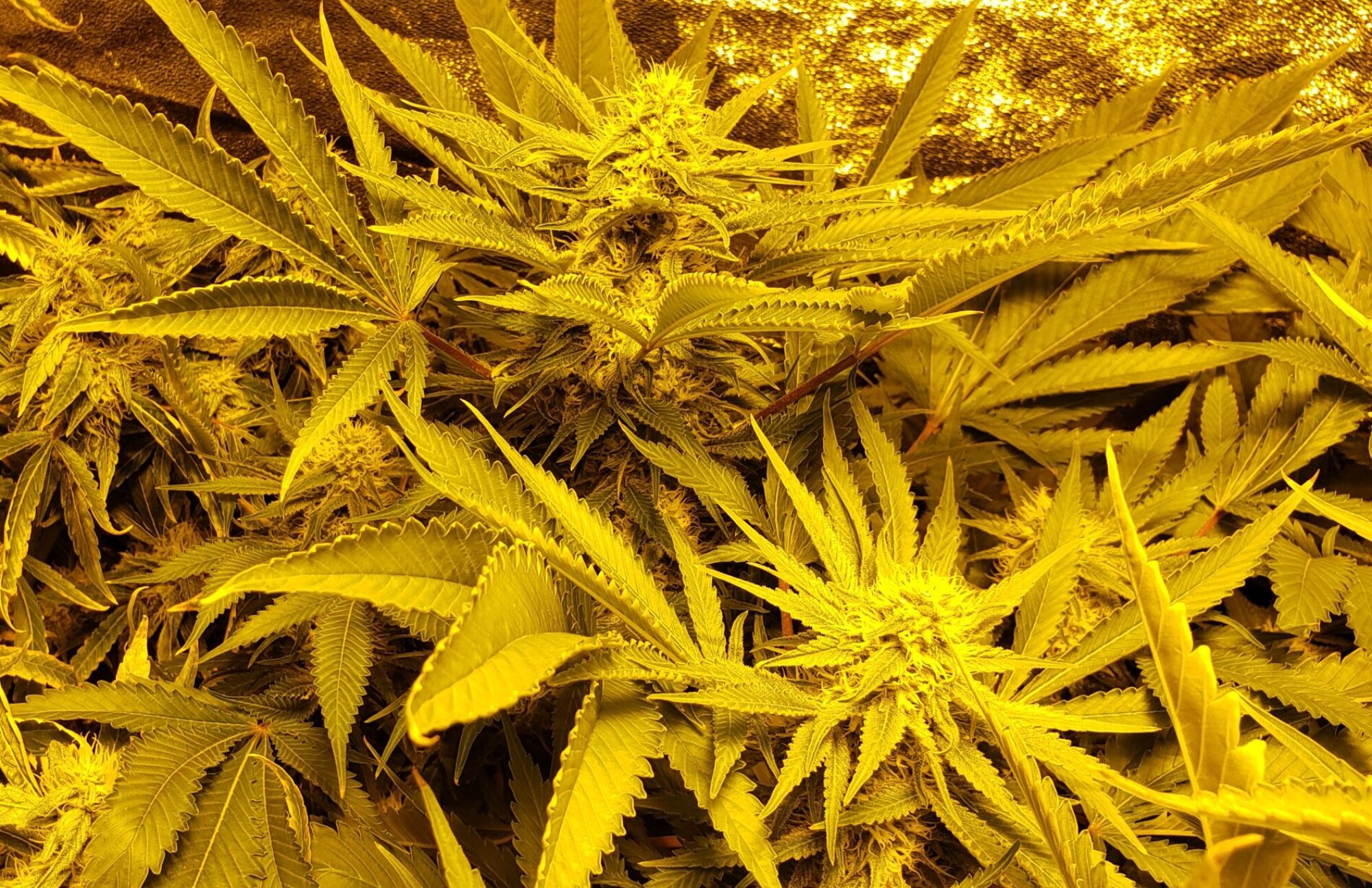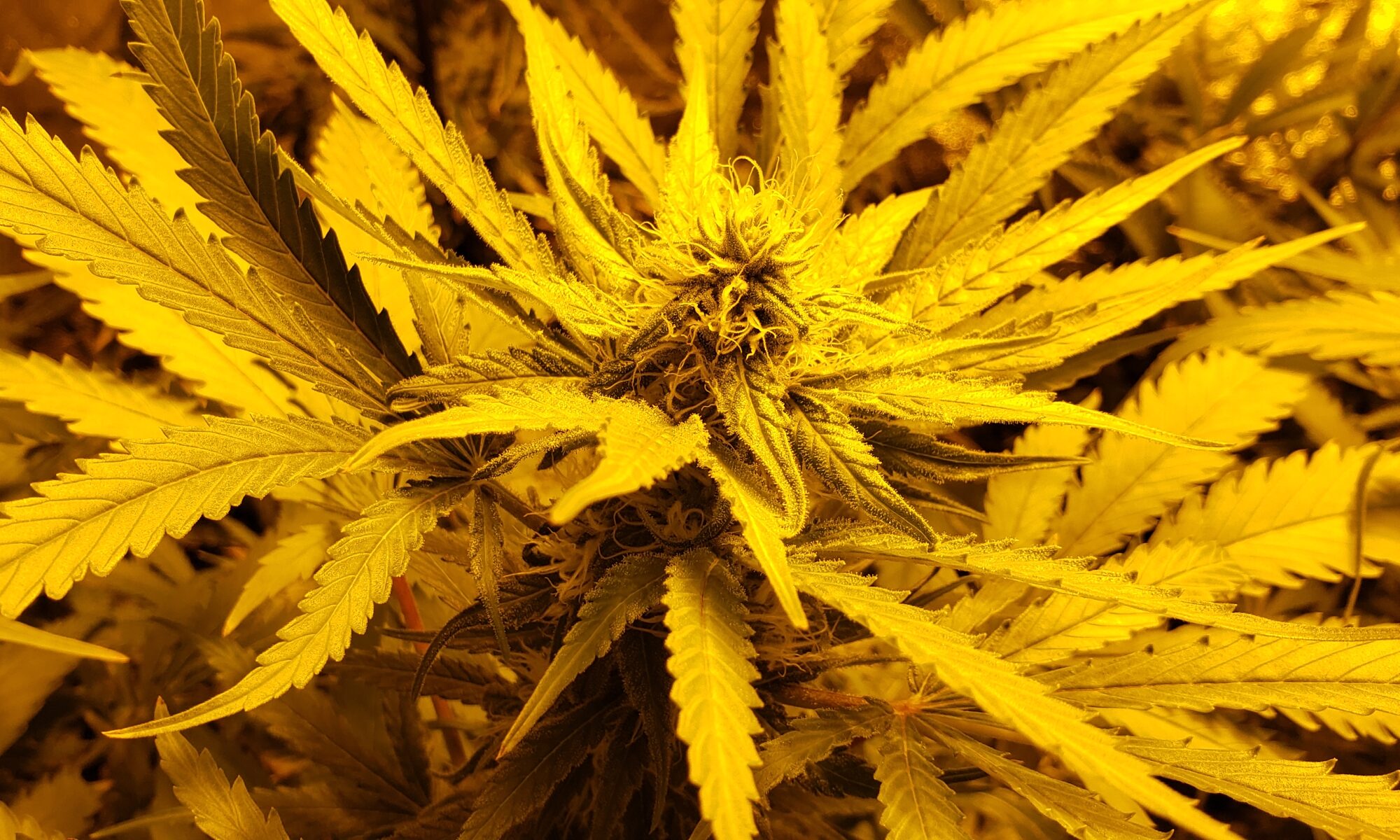You really need to understand your local and state laws. And follow them. Period.
Don’t assume that because it’s legal in some form in a lot of places, that your local/state authorities won’t come after you if you break their laws. Some are making a point of going after law breakers to prove the point that it may be legal in some places but not there. Don’t assume that your local and state authorities have better things to do than go after you for growing a little weed. Don’t assume that they’ll wait until all the serious malicious crimes have all been solved and prevented before going after those committing “innocent, victimless crimes” like growing marijuana. Seriously.
You want dried, female marijuana flowers, also known as bud.
Marijuana plants can have either male flowers, female flowers or both. The useful part of the marijuana plant is the female flower. Unless you are breeding the plants, and wanting seeds, you don’t need the male flowers. Seed producers can actually process the seeds so that the plants only produce female flowers. This is good because the plant doesn’t have to put energy into producing the seeds (which takes away from the useful part of the flower).
3-4 months will get you from seed to dried bud.
There are a number of factors that determine how long it takes. One factor is how long it takes the variety to bloom. Some faster varieties take around 45 days from beginning to end of the blooming stage when you can harvest it. Others can take more than 75 days. The other factor is how long you grow the plant before starting the blooming stage. That is determined by how big you want the plant to be, and how strong your light is.
4 square feet is enough for a couple small to medium sized plants.
Obviously how much space you need is based on how many plants you are growing (check your legal status on what’s allowed). But also how large you let the plants get. We’ve had good results with 3 to 4 medium sized plants in a 4 foot by 4 foot space indoors. One really large plant might require 4 foot by 4 foot just by itself. Smaller plants have been grown in smaller spaces, like inside a 2 foot by 3 foot cabinet (some ventilation is required so small cabinet growing is often less than ideal, but can be done).
If growing outside is legal in your area, you probably have to keep it out of view from the public, so consider privacy fencing (and quite possibly security fencing).
Growing inside will require at least some dedicated space. Again, check your legal specifics, but you may need to have it in a locked room (as well as a locked storage place for your harvested bud). And that leads us to…
Yes, they do. There are ways to handle the smell when growing inside, like venting or filtering. Outside the neighbors may smell it, depending on how close they are and how much you are growing.
Seedlings and small plants don’t generally smell much. But more mature plants, especially large plants can raise a stink. Some varieties are worse than others, but expect that inside you’ll have to do something about the smell. Options include venting to the outside, carbon filters, ozone generators or a combination of these.
Growing outdoors takes care of itself, except that if you have neighbors close by and they’re down wind from your garden, they will smell it sooner or later, so it’s best to have a “good neighbor” relationship with them. If they are looking forward to you sharing your harvest with them, they’ll probably be OK with it.
It takes some time, but doing it our way (just the really important things), a couple plants really don’t need much time. A few minutes a couple times a week is usually enough for just a plant or two.
We’ve spent a lot of time experimenting with different methods and procedures, adding in steps, removing steps… There is a lot of advice on the internet about growing marijuana that suggests you do things that, in our experience just don’t matter much. The “Pareto Principle” or “80/20 rule” suggests that 80% of the effects come from by 20% of the causes. What does this mean? It means that there are a lot of things you can do while growing marijuana that will get you a little bit more bud. But to get most of the bud (the 80%), you only need to do 20% of what many ppl will tell you you must do. For example, you can check the acidity and fertilizer concentration of your plants daily, making adjustments each day. But will your marijuana buds really be much bigger and better than if you just check and adjust those things once a week? In our experience the answer is “not much.” You certainly can go “above and beyond” our recommended schedule, and do it more frequently. It won’t hurt, and it may help… a little. But in order to save time, effort and money, we’ve reduced things to what we feel is the optimal 80/20 level. This saves you time and money, and also simplifies things, which is important for getting started. Why not start out simple? You can always experiment and increase your efforts, cost and complexity to see what works best for you as you gain experience.
See answers to “Doesn’t growing take a huge amount of time?” and replace “time” with “effort”.
See answers to “Doesn’t growing take a huge amount of time?” and replace “time” with “money”.
We define a step by step process for you to follow that eliminates the need for a green thumb.
People with “green thumbs” somehow know what to do and when to do it. Our step by step process tells you what to do and when to do it. As long as you can follow the steps and do them when our schedule tells you to, there’s very little that can go wrong to prevent you from growing great bud.
Using non-dirt methods of growing, for those who prefer to not get their hands quite so dirty.
There are many forms of hydroponics, but we will be recommending (and discussing) the simplest (DWC or Deep Water Culture). Instead of dirt, plants are placed in a growing “medium” to support them (think dirt replacement like clay pebbles, shredded coconut husks or even glass marbles), while some of the roots hang down into a solution of water and “nutrients” (plant food). The “medium” is simply there to support the plant and allow air to circulate around the roots that are not in the solution below. The medium usually does not supply any nutrients. As the plants grow, they draw nutrients from dirt or hydroponics solution. When they nutrients the plant needs are all used up, nutrients/fertilizer must be added. Some nutrients in the fertilizer do not get used up and then get concentrated when more is added. If those become too concentrated, it can harm the plant. With dirt, it’s difficult to remove those unused nutrients. In hydroponics, you can simply rain out the old solution and replace it with a new batch. We recommend changing the hydroponics solution about every 2 weeks when the plants are growing aggressively. This ensures that they have a balanced amount of nutrition, not too much of some nutrients and not enough of others.
Sure, dirt is OK. Put seeds in dirt where they will get sunlight and water them. Fertilize as needed. But we believe for most beginners, using the simplest hydroponics methods gets you way beyond dirt in simplicity, ease of use, quality and consistency of bud produced.
If you’re growing outside, dirt may be the obvious answer. But inside (and in many cases outside) hydroponics provides a scientific approach that is simpler than using dirt. It allows a much more controlled rooting environment, eliminating the guesswork required when using dirt. When your dirt is depleted of nutrients and full of waste products from the plants grown in it, how do you know how much to add, and how do you remove the waste products and the remaining unused nutrients that build up? You could just buy new dirt. But quality potting soil can be expensive and requires a lot of heavy lifting when purchasing and disposing of it. Hydroponics allows you to dispose of the “used” solution and replace it with fresh, new, properly balanced solution. The old solution can be dumped down the drain or used to water your lawn or house plants.

